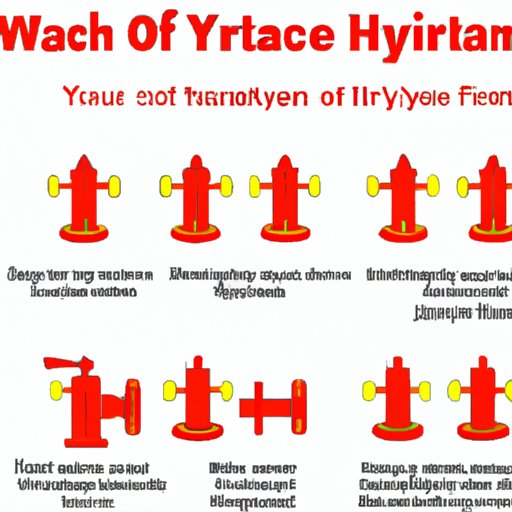
I. Introduction
If you are looking for an exercise that targets your glutes and legs, then the fire hydrant exercise should be at the top of your list. The fire hydrant exercise is a simple yet effective exercise that can help you build stronger and defined glutes while also strengthening your legs. This article will provide a comprehensive guide to mastering the fire hydrant exercise, including how to perform the exercise correctly, recommended sets and repetitions, and common mistakes to avoid.
II. The Ultimate Guide to Mastering the Fire Hydrant Exercise
To master the fire hydrant exercise, follow these simple steps:
- Start on all fours with your wrists directly under your shoulders and your knees under your hips.
- Engage your core and thighs, and lift your right leg up and out to the side, keeping your knee bent and your foot flexed.
- Lower your leg back to the starting position, but keep your foot off the ground. Repeat on the other side, and continue alternating legs.
Repeat this exercise for 10-15 repetitions on each side, for a total of 2-3 sets. Remember to keep your back straight, and avoid arching it during the exercise. Additionally, focus on squeezing your glutes as you lift your leg, and avoid over-rotating your hips or twisting your upper body.
III. Why the Fire Hydrant Exercise is the Perfect Addition to Your Workout Routine
The fire hydrant exercise is a great exercise to include in your workout routine for several reasons. First, it targets the glutes, one of the largest muscle groups in your body, which can contribute to a toned and defined lower body. Additionally, the exercise also strengthens your legs, which can help with balance, stability, and overall lower body strength.
Moreover, this exercise can be performed almost anywhere and with no equipment, making it a convenient and cost-effective way to improve your fitness.
IV. How the Fire Hydrant Exercise Helps Build Stronger and Defined Glutes
The fire hydrant exercise targets several muscles in your glutes, including the gluteus medius, gluteus maximus, tensor fasciae latae, and the piriformis. These muscles are important for hip stabilization, pelvic alignment, and overall lower body strength. By targeting these muscles, the fire hydrant exercise can help you build stronger and defined glutes over time.
To see results in terms of stronger and defined glutes, you can gradually increase the number of sets and repetitions you perform. Additionally, adding resistance bands or ankle weights to the exercise can also provide an extra challenge and help increase muscle activation.
V. A Beginner’s Guide to the Fire Hydrant Exercise: Tips and Tricks for Proper Form
Proper form is essential to performing the fire hydrant exercise correctly and avoiding injuries. To ensure proper form, follow these tips:
- Keep your neck in a neutral position, and avoid looking up or down.
- Keep your hips and shoulders square to the ground.
- Avoid overextending, or lifting your leg too high.
- Engage your core and glutes throughout the exercise.
Remember, you want to feel the burn in your glutes, not your lower back or hamstring. If you are experiencing discomfort or pain, stop and take a break.
VI. The Science Behind the Fire Hydrant Exercise and Its Benefits for Your Lower Body
The fire hydrant exercise is effective for developing lower body strength because it targets multiple muscles in your glutes and legs. Additionally, the exercise can help improve hip stabilization, which can play a role in preventing injuries and improving athletic performance. Specifically, the gluteus medius, one of the muscles targeted in the exercise, is important for maintaining pelvic and gluteal alignment during dynamic movement, such as running, jumping, and lateral movements.
VII. Fire Up Your Workout with the Fire Hydrant Exercise: Variations and Progressions to Try
Once you have mastered the basic fire hydrant exercise, you can incorporate variations and progressions to challenge yourself and target your muscles in new ways. Some variations and progressions you can try include:
- Resisted fire hydrant exercise: Add a resistance band around your thighs to increase muscle activation.
- Fire hydrant with leg extension: Extend your leg straight out after lifting it to the side, then lower it back to the starting position.
- Fire hydrant with a pulse: After lifting your leg to the side, pulse it up and down without lowering it back to the starting position.
- Fire hydrant plank: From the fire hydrant position, extend your lifted leg out behind you, and lift your opposite arm, keeping your core engaged.
VIII. Conclusion
The fire hydrant exercise is a simple yet effective exercise that can help anyone build stronger and defined glutes while improving overall lower body strength. By mastering the proper form, gradually increasing the number of sets and repetitions, and incorporating different variations and progressions, you can take your workout to the next level. Incorporate the fire hydrant exercise into your regular workout routine, not only to make your workouts more challenging but also to develop a strong, toned, and defined lower body.




